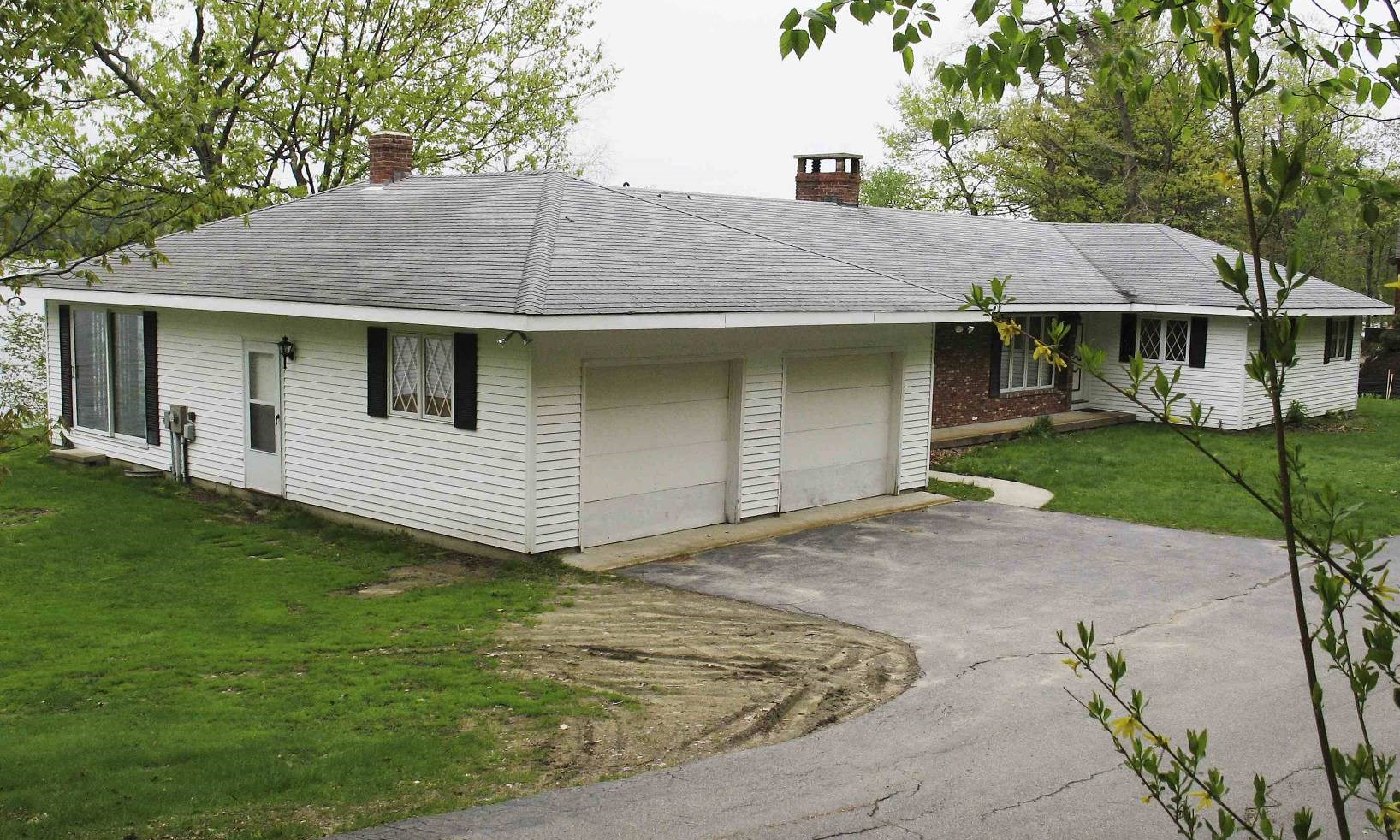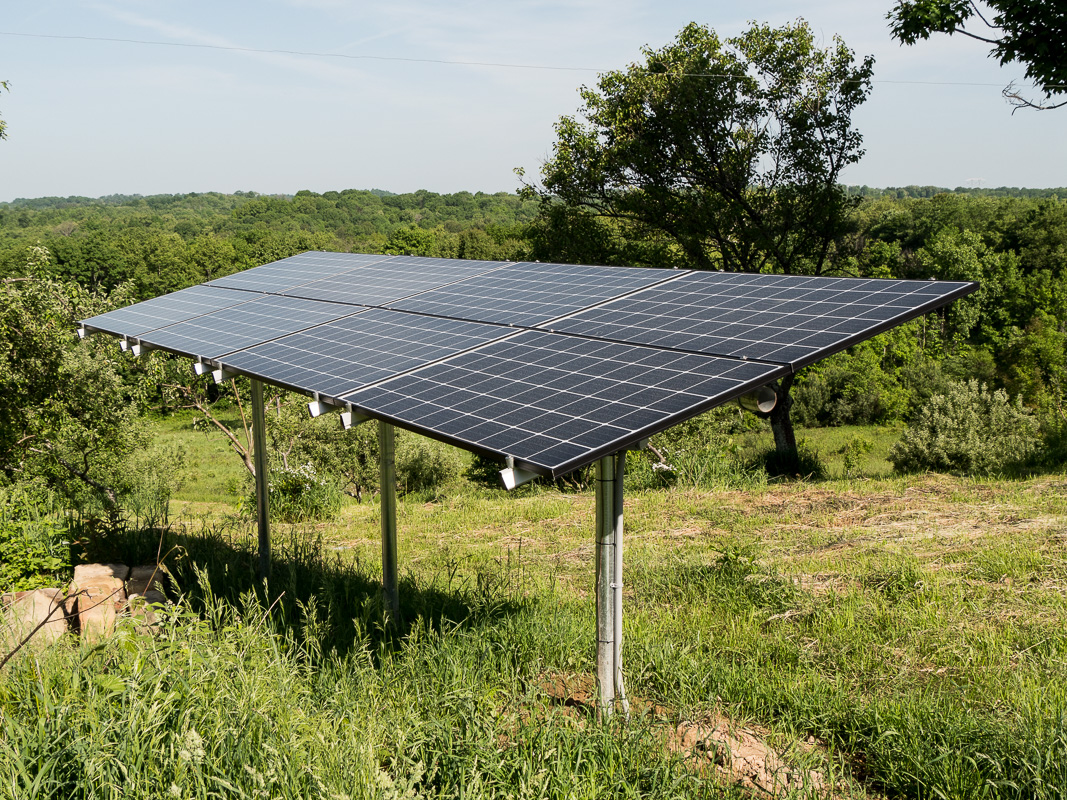Case Studies
Thank you to our project participants for committing the time to share their stories!

35th Home to Meet 1000 Home Challenge! Zero Energy from Pittsburgh, PA
The Richard Piacentini household achieved zero energy (-67 kWh) as a result of a series of investments over a 15-year period. Typical of homes in Pittsburgh, Pennsylvania, this home had gas space and water heating. Here is their story:
“Our home is typical of many of the homes in Pittsburgh that were built in 1958. Solid construction, but very little insulation or concern about energy efficiency. We purchased the home in 1996. In 2003, we started to make improvements in energy efficiency.
This included blown in insulation in walls and attic and replacing single pane glass windows with double pane insulated ones, as well as replacing incandescent light bulbs with CFLs and later LEDs. In 2014 we decided that we wanted to reduce our fossil fuel use in our home and replaced our gas furnace and central air conditioner with a geothermal system. In 2017 we replaced our roof which set us up to add a 7.35kW solar PV system.
We do not have good southern exposure so of the 21 panels, 9 face south, 7 face west and 5 face east. By this time, we decided to make achieving zero energy our goal and began to replace the rest of our fossil fuel appliances with and electric dryer and a hybrid heat pump water heater. In 2019 we added a 12kW carport solar PV system over our driveway and two Tesla batteries to provide some back up storage for overnight.
In 2020 we upgraded some of our other major appliances to more efficient ones including replacing an old electric range with an induction range. With all these improvements, by the end of 2020, we were able to achieve zero energy in the first year that we went fossil free.”
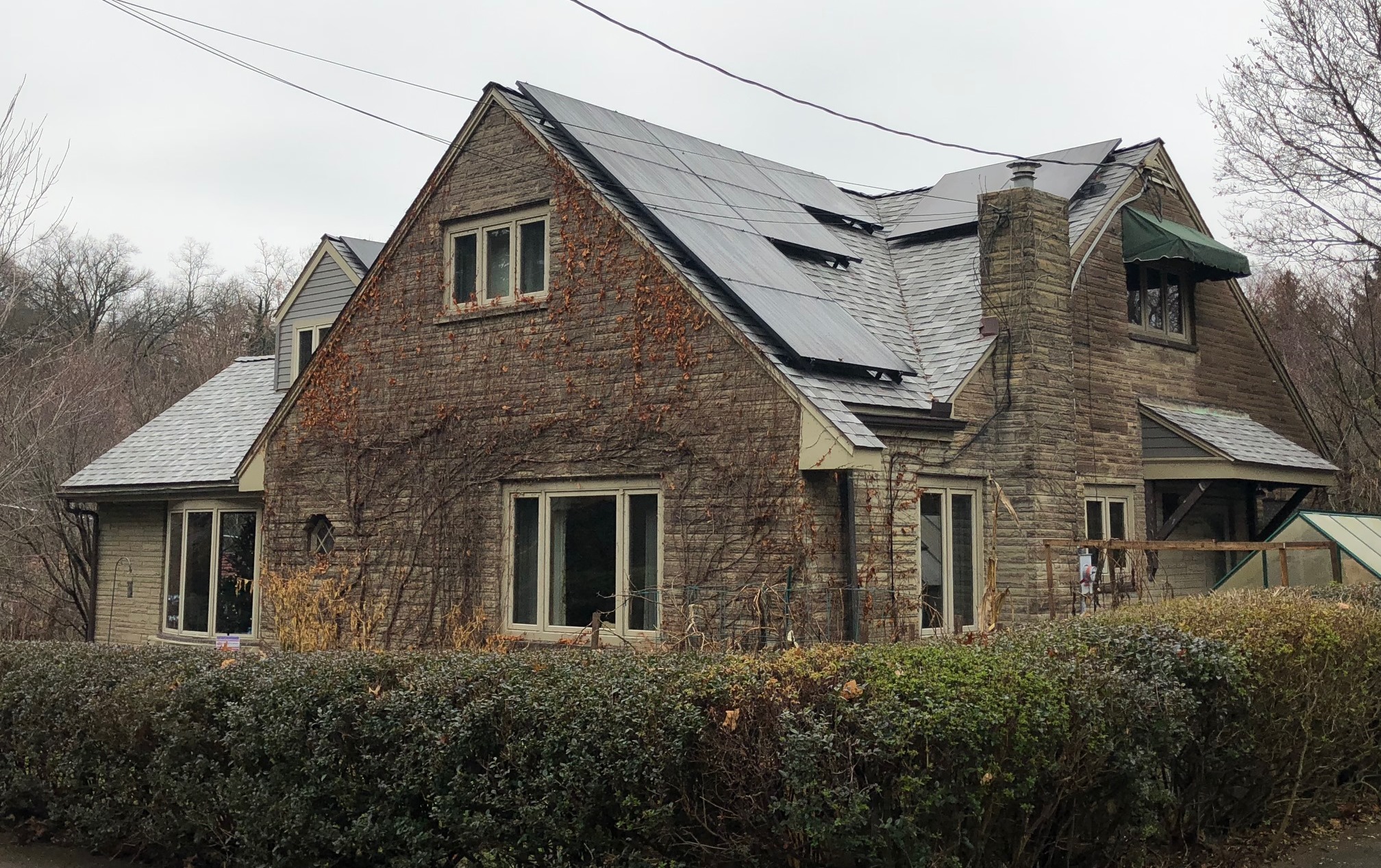
Graphs
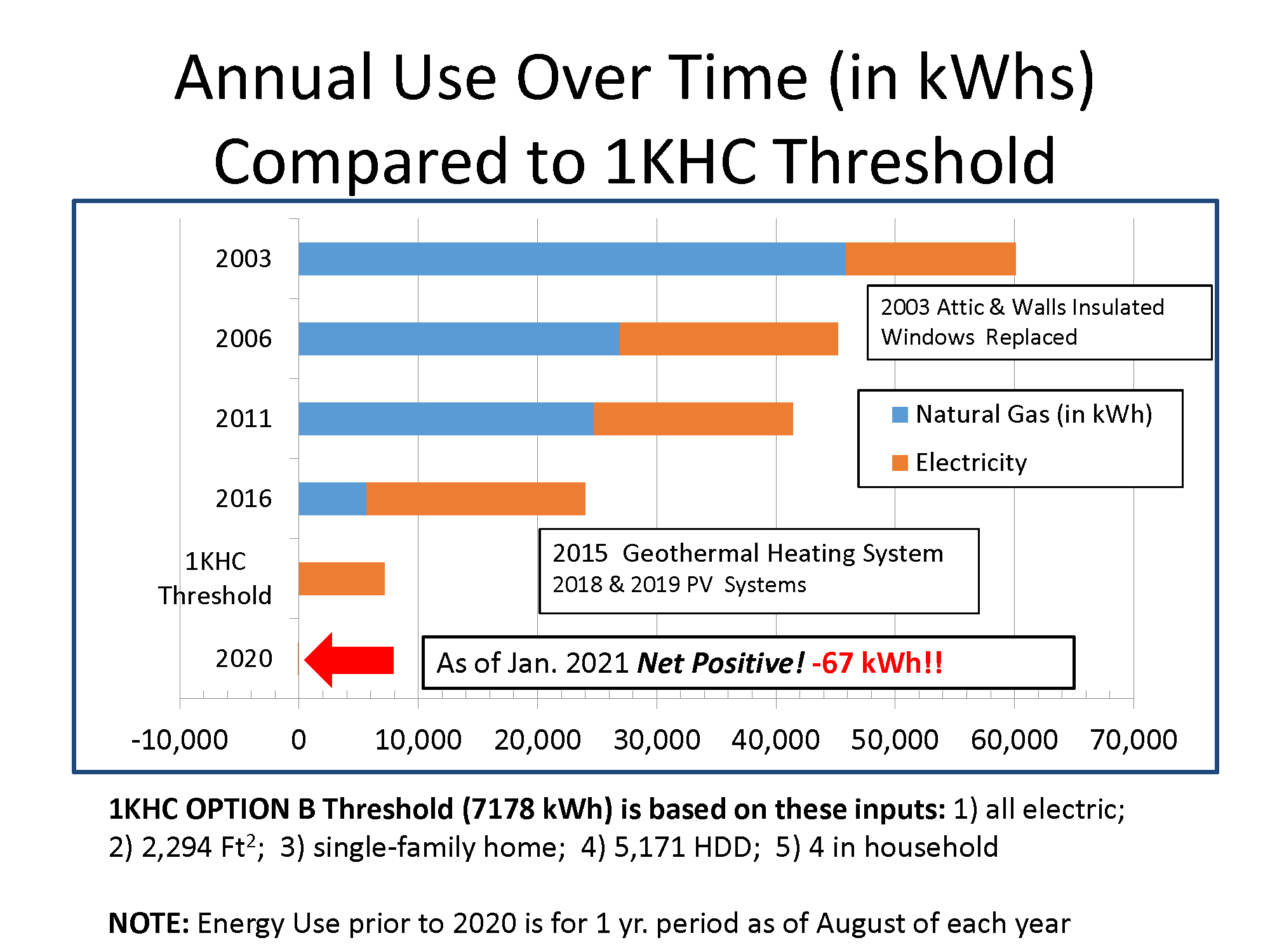
Happy Valley Bellingham Deep Energy Retrofit
Happy Valley Bellingham Deep Energy Retrofit Meets the 1000 Home Challenge!
Kat McAvoy & Ario Salazar had purchased a home and were in the process of gutting it when they learned about the opportunity to participate in the Community Energy Challenge (communityenergychallenge.org) and achieve substantially greater reductions in energy use while enhancing comfort and indoor air quality. The house was unoccupied, and the timing was perfect to blend the renovation the McAvoy-Salazar’s had already envisioned with a deep energy retrofit.
This project benefited from unique opportunities, including a pilot project that provided technical support and enhanced financial incentives for deep energy retrofits and homeowners who were dedicated to the project. Critical to the project’s success were the contributions from Kurt Waldenberg of North Sound Energy & Remodel who designed and installed the building envelope improvements and the availability and expertise of Kat’s dad, Jim McAvoy, who installed the plumbing, heating, and ventilation systems.
The home featured strict attention to a continuous air barrier which resulted in an impressively low 219 CFM50 (.97 ACH50). The walls and slopes were thickened to the inside (R 32); R 60 cellulose was added in the attic, and R 32 was achieved with blown in cellulose in the home’s crawlspace ceiling. A Sanden CO2 heat pump water heater provided hydronic heat as well as domestic hot water. A heat recovery ventilation system provided balanced ventilation throughout the home.
The home’s OPTION B 1000 Home Challenge threshold was 5,792 kWh per year. During the monitoring period from February 2018 to January 2019, the home’s total energy use was 5,439 kWh. They met the Thousand Home Challenge without any contribution from a solar photovoltaic system!
The Happy Valley Bellingham Deep Energy Retrofit is the 34th home to meet the 1000 Home Challenge, and the first home from Washington state.
The Community Energy Challenge is a program administered by the Opportunity Council. This project was part of a “Toward Net Zero Energy” pilot funded with a grant from the Northwest Clean Air Agency.
Presentations
TNZE Presentation HPC 2018 (PPT download)
Presentation given at the 2018 Home Performance Conference describing the Opportunity Council’s Community Energy Challenge, Toward Net Zero Project pilot project.
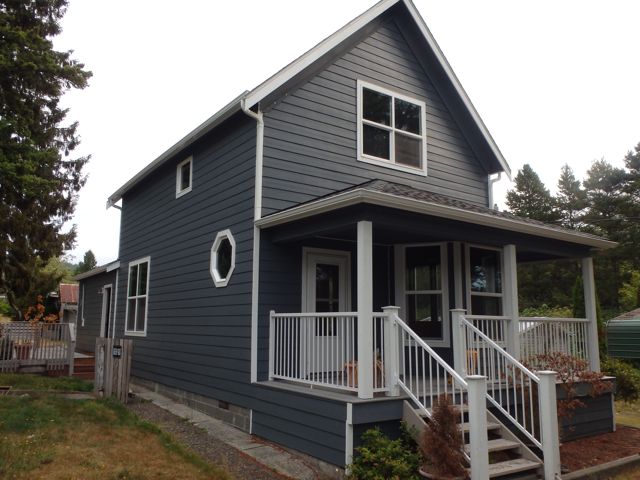
Case Studies and Graphs
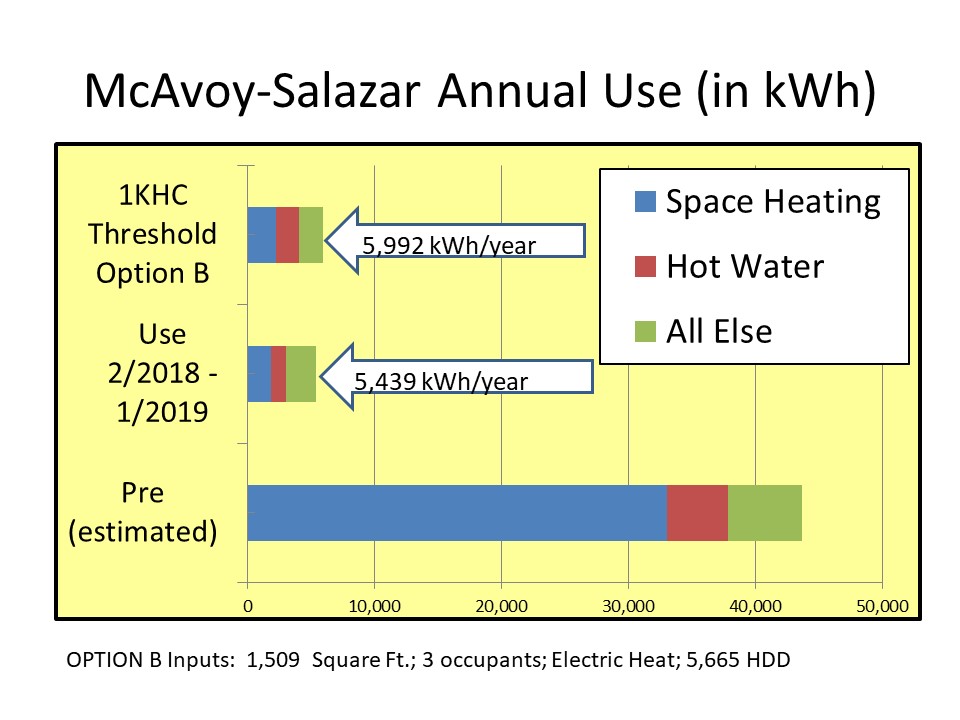
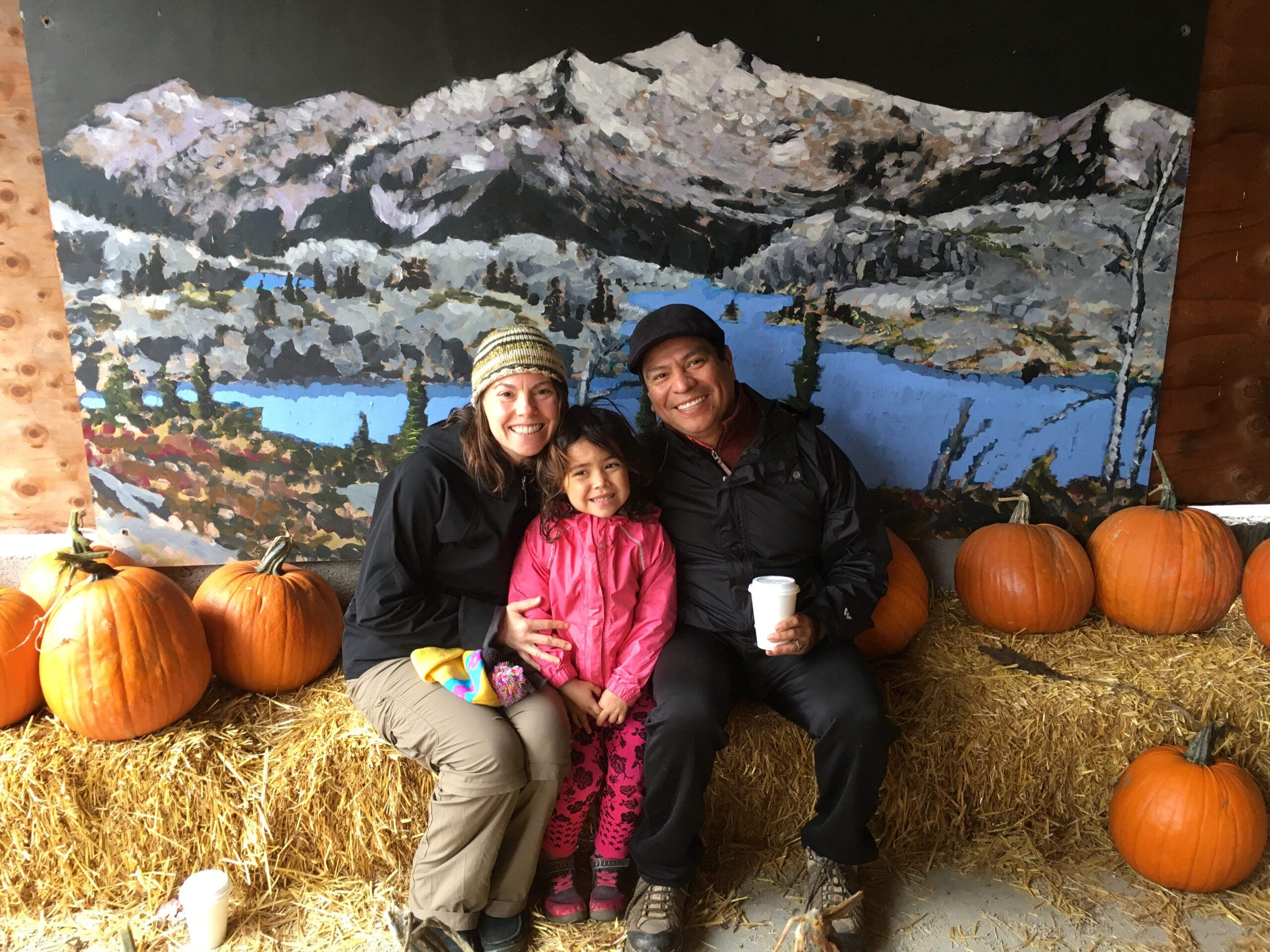
Kat McAvoy & Ario Salazar
Stratton-Lee Home - Temple City, CA
Chris Stratton and Wen Lee are the first couple to achieve the 1000 Home Challenge in two different homes. Their second home was several years in the making: it involved a DIY renovation of the homeowner’s childhood home. Among their goals were: gain construction experience; improve the performance and indoor environmental quality of their home; reduce the climate impacts of the home’s operation; add value to the home; and demonstrate to others what can be done and the benefits of doing deep energy renovations.
Their journey has been captured in the blog Frugal Happy.
While techniques will vary, the general strategies deployed are very replicable. They included: removing all combustion appliances and turning off the fossil gas supply line; air sealing and superinsulating the building envelope; installing high performance electric appliances and adding on-site energy generation and storage.
The results are impressive! Chris and Wen achieved an 89% reduction in energy use. They used 1,250 kWh during their monitoring year, November 1, 2019 – October 31, 2020. Approximately ½ of the reduction resulted from the 4 kW PV array.
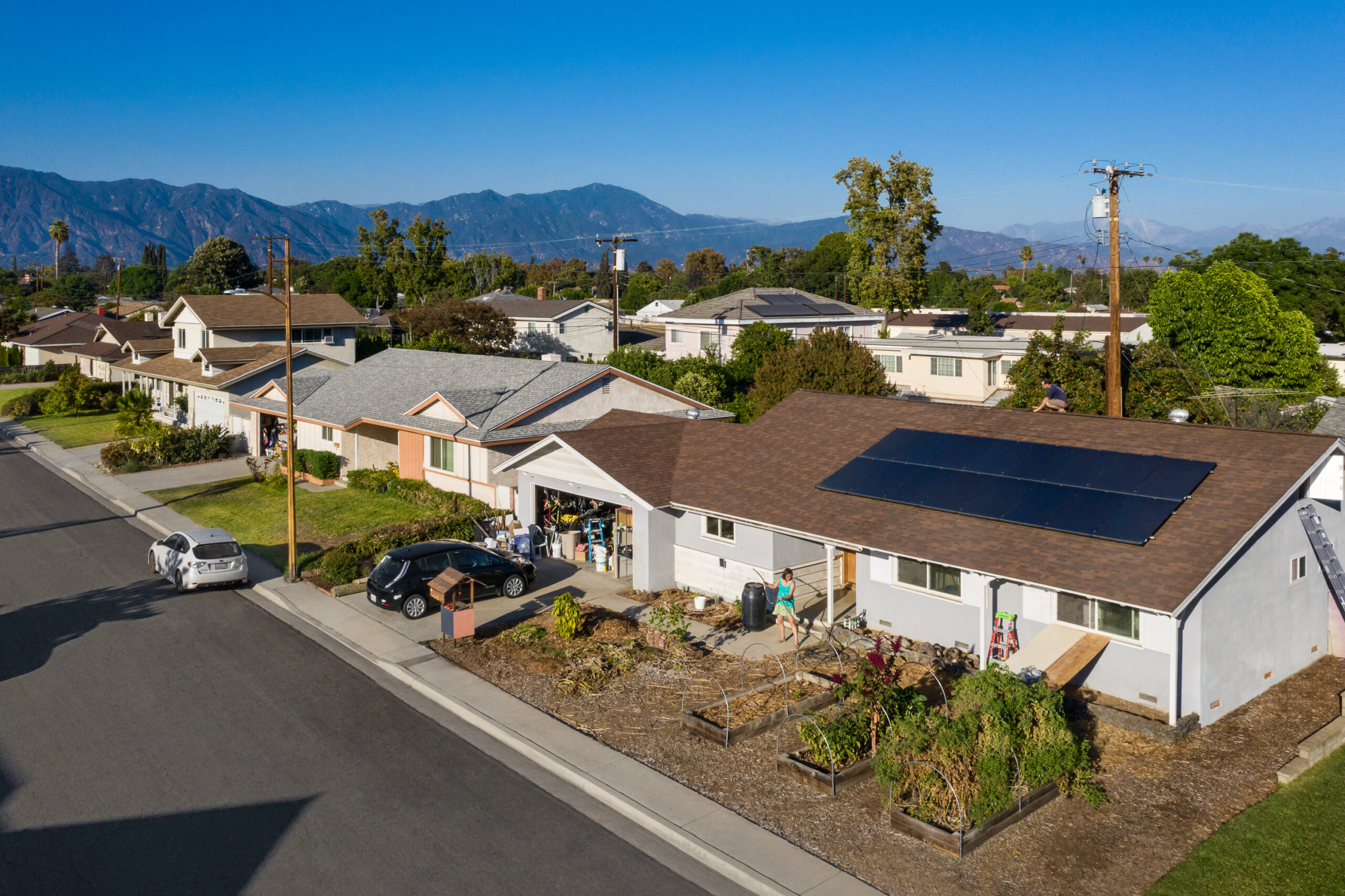
Blog and Book Links
Irvine-Dorfman Behavior and Retrofit Project
Our leaky old historic house went through various stages since 1999 becoming net positive for energy use by 2016. During the first decade simple behavioral steps produced a 50% energy reduction by heating only sections of the house and changing incandescent lightbulbs.
We joined the Thousand Home Challenge in 2009, carrying out a retrofit that built on our earlier behavioral efforts.
Our strategies included:
- Monitoring major energy uses.
- High-quality air sealing and insulation to reduce heat loss in the winter and maintain summer comfort.
- Using a house-within-a-house approach sealing one section of the house to a higher standard to increase winter comfort.
- Learning to “heat the person not the room” to maintain comfort.
- Identifying passive energy loss and then reducing our phantom electrical load, our stove pilot lights, and standby water heater energy.
By 2014 we reduced our energy use by 87% since 1999 and 73% since the 2009 Thousand Home Challenge baseline, to meet the Thousand Home Challenge. In 2016 we installed a 7.25 kW solar electric system producing 50% more energy than we used in 2015. A Honda Clarity plug-in hybrid purchased in Feb 2020 vastly reduced our gasoline usage while maintaining our net positive status.
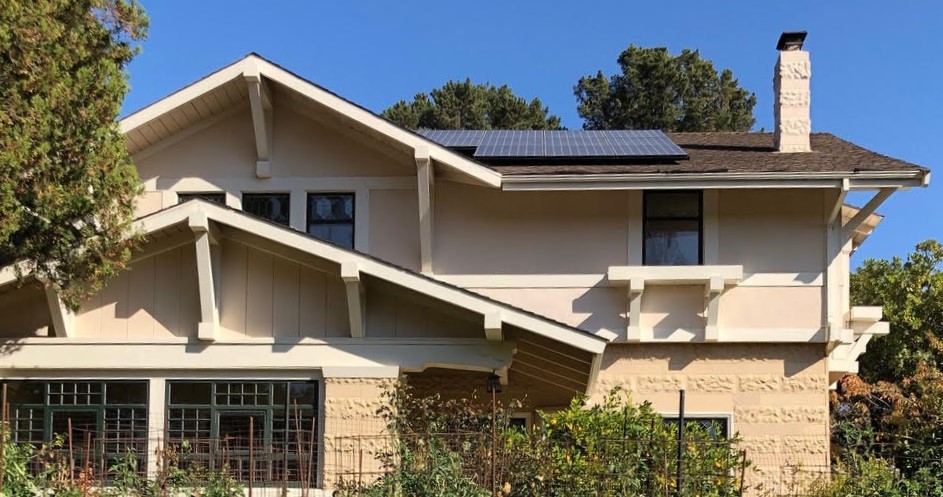
Graphs
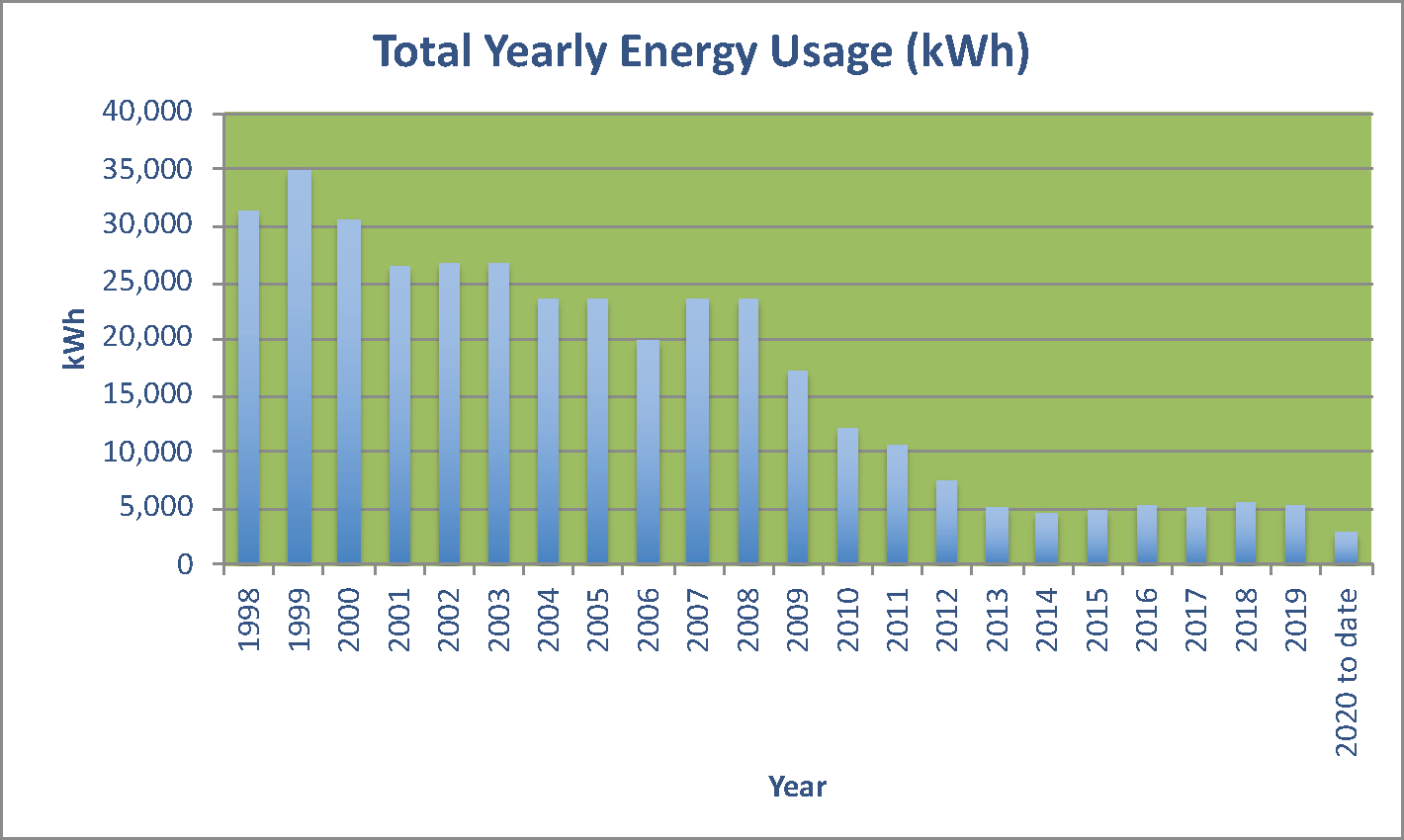
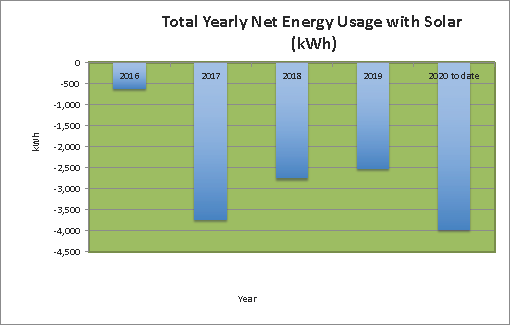
Colonial Solar House, Illinois
The Colonial Solar House in Urbana, Illinois is the 32 project to officially meet the 1000 Home Challenge!
Scott Willenbrock, the owner, was challenged to bring his home’s carbon footprint in line with his concern for climate change. Four strategies were deployed to convert his 1929 2,500 square foot home into a zero net energy house.
- The energy source is solar: photovoltaic modules are used to produce electricity directly from sunlight in a 17.6 kW array
- Geothermal heating and cooling replaced the home’s gas furnace
- The need for heating and cooling is reduced by weatherization.
- The demand for electricity is reduced by using high-efficiency appliances.
There is enough surplus electricity to power an electric car for local driving.
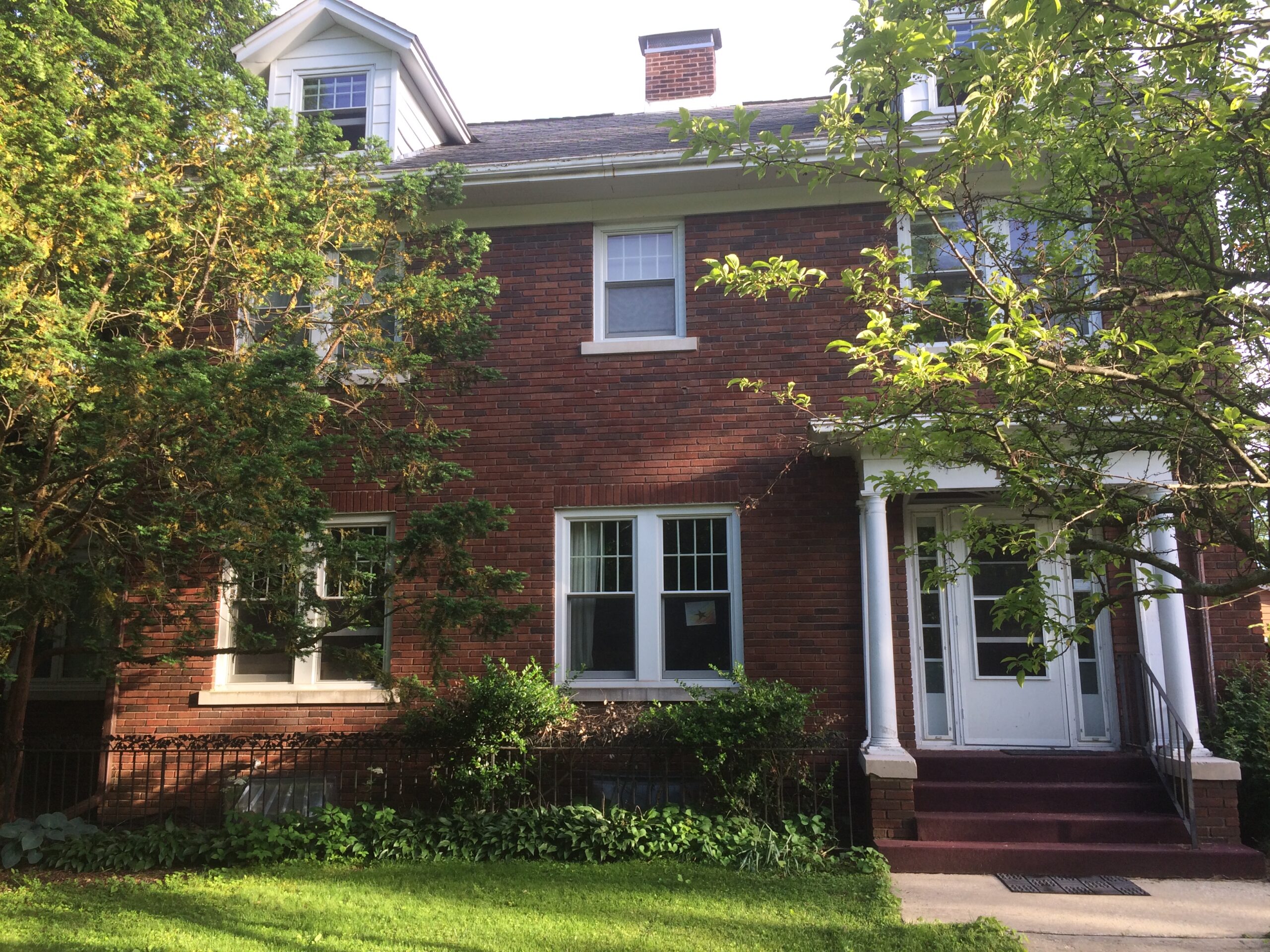
Articles
Learn more about the Colonial Solar House by visiting this website or reading this article published in Building Performance Journal.
POS Dream House
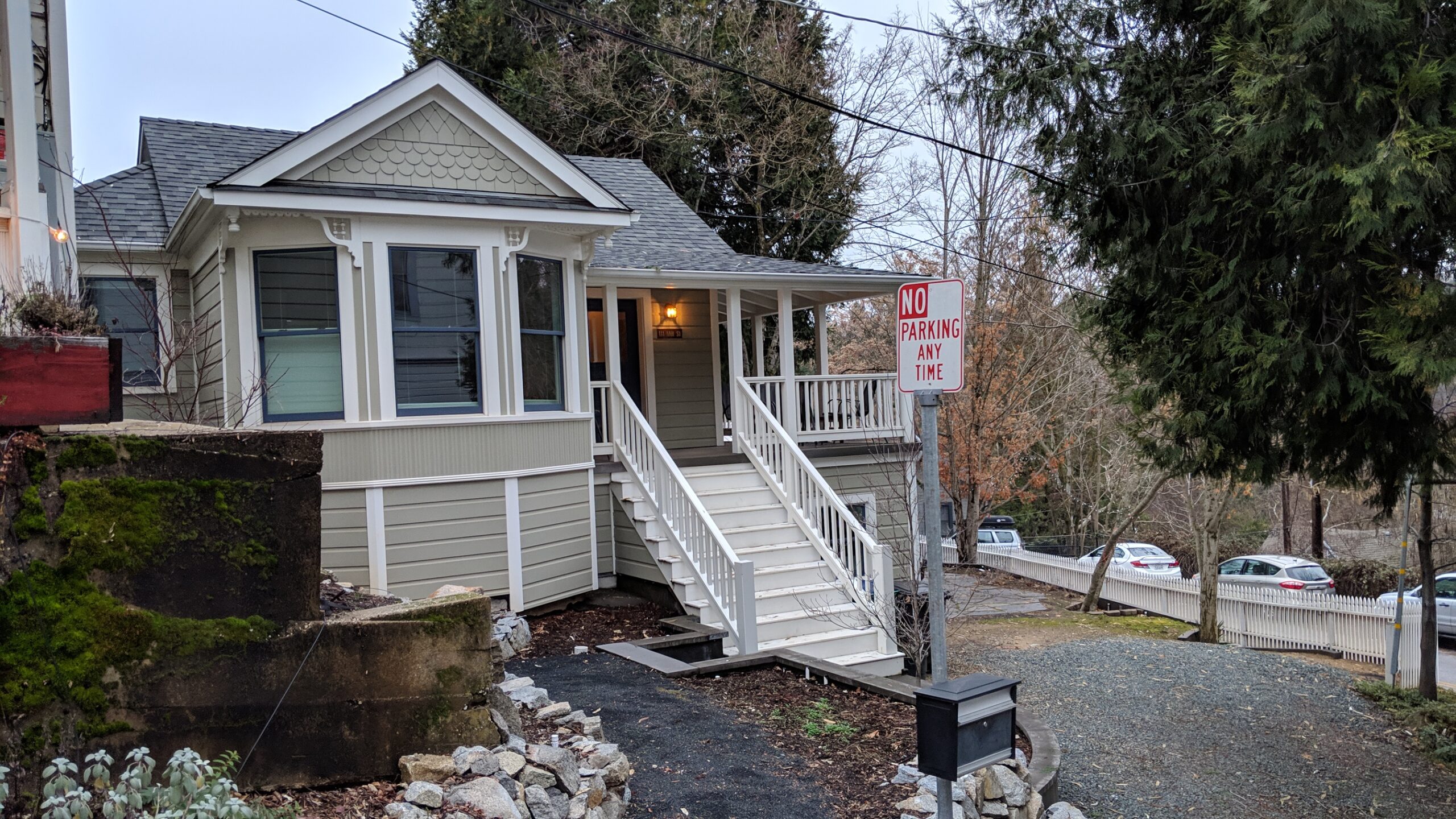
Case Study
Ohio Farmhouse - John Morgan
(Updated 11-29-2020) – John Morgan insulated the wall cavities and attic of his 1880 vintage southeastern Ohio farmhouse years ago. He achieved a deep energy retrofit through lifestyle choices, reduction of electric baseload, and replacement of his propane boiler with a ductless heat pump. His house is the 18th to meet the 1000 Home Challenge, and he did so without the addition of PV.
In May 2018 John installed a 2400 watt ground mount grid tied PV array at cost of $13,072 plus $500 for a new net meter. The size was calculated to be sure that he produced less than his current annual consumption to avoid having his rural electric cooperative switch the credit for power delivered to the grid from retail to wholesale.
John manually changes the seasonal angle 4 times a year to: 37 degrees for spring and fall, 59.6 degrees for winter and 12.5 degrees for summer.
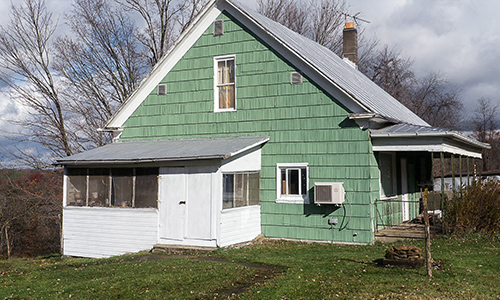
Case Study
Ward Lutz Ohio Net Positive Home
(Updated 08-19-2020) – This is one of the first homes in the United States and the first Ohio project to meet the 1000 Home Challenge. It is a net energy producer. Based in Urbana, Ohio, this 60 year-old home met the threshold allowance a year after work was completed.
Since then the addition of a PV array and ductless heat pump have moved Ward Lutz’s home to become a net energy exporter, averaging 4.2 surplus kWh/day since November 2010. Some discussion and additional performance information is posted on the Home Energy Pros, 1000 Home Challenge Group.
As an experiment, this home has the outdoor unit of the ductless heat pump located in the unconditioned crawl space. Energy use, temperature, and relative humidity data for both the heating and cooling seasons is summarized in several of the spreadsheets below.
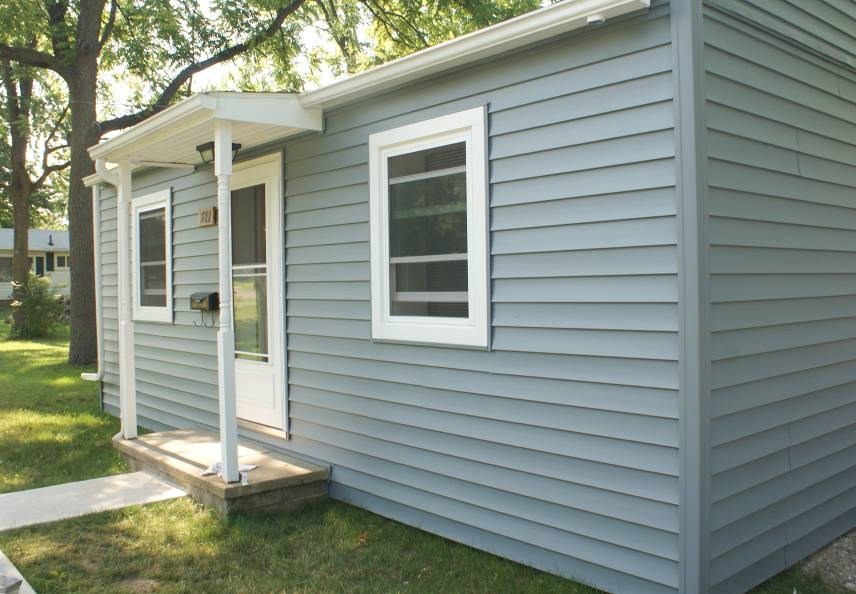
Case Studies & Presentations
Wayne and Diane Mackey Pennsylvania Case Study
(Updated 10-28-2017) – Located in Chambersburg, PA, this is the first home in Pennsylvania and the fifth home in North America to officially meet the 1000 Home Challenge. After meeting the 1000 Home Challenge, the Mackey’s made additional improvements as well as installing additional PV capacity. At this point they are net zero, and simultaneously charge an electric vehicle.
PDF Downloads
5 Year Summary of Savings and Income (2012-2017)
Home Energy Score Report: 10 out of 10!
Wayne Mackey’s Public Presentation
Energy Use and Cost Over Time
Annual Energy Use (Before and After)
Wayne and Diane Mackey Pennsylvania House Image
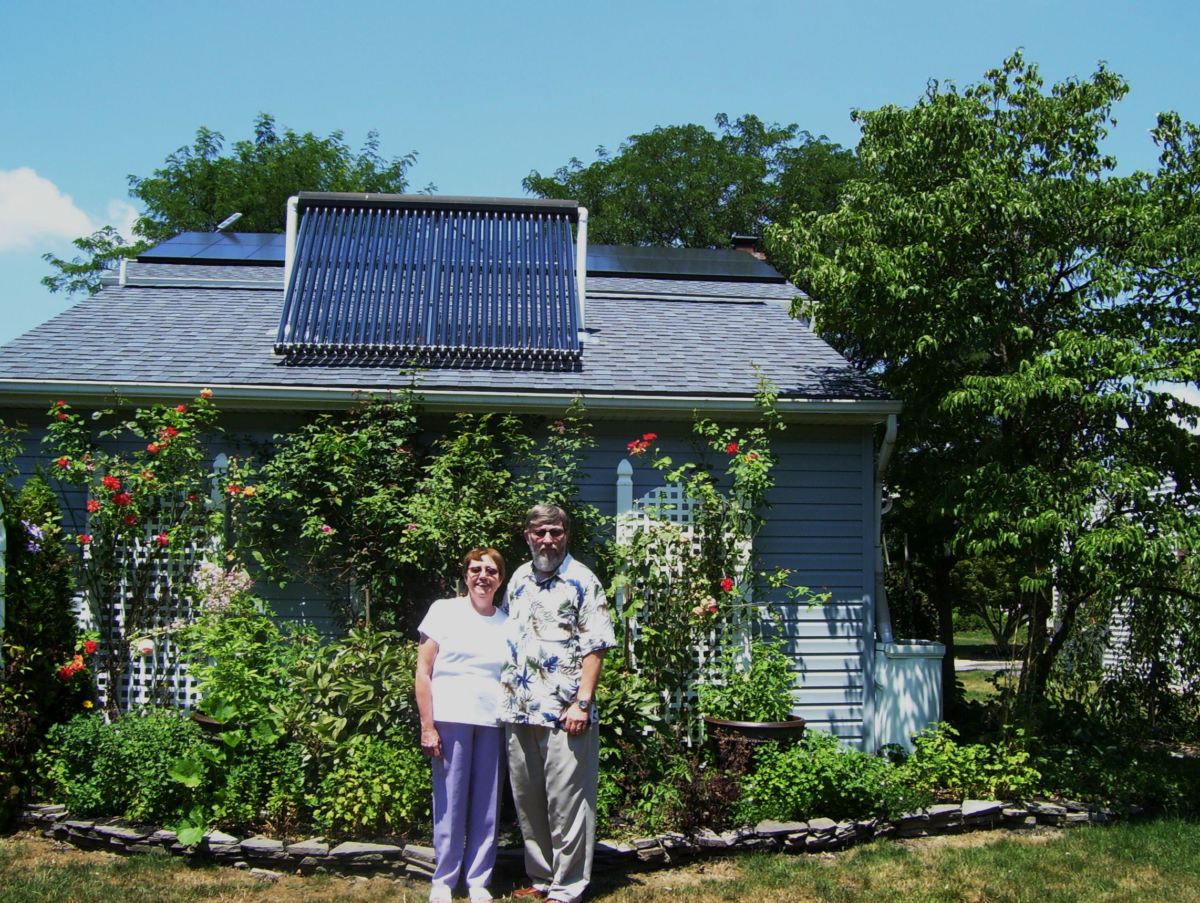
Case Studies & Presentations
Midori Haus, Santa Cruz, California
(Updated 07-20-2017) – The 22nd house to meet the 1000 Home Challenge is the home of Kurt Hurley and Chie Kawahara, a California bungalow originally built in 1922. The home was renovated in 2012 with a focus on significant energy reduction while restoring the charm of Arts and Crafts aesthetics.
Their renovation was driven by Passive House principles, and the home’s Passive House certification marked the worldwide millionth square meter of certified projects. This 1,569 ft2home used only 4,396 kWh/year without using PV to offset electricity use. The couple hosts several public tours throughout the year and a forthcoming book describes their journey.
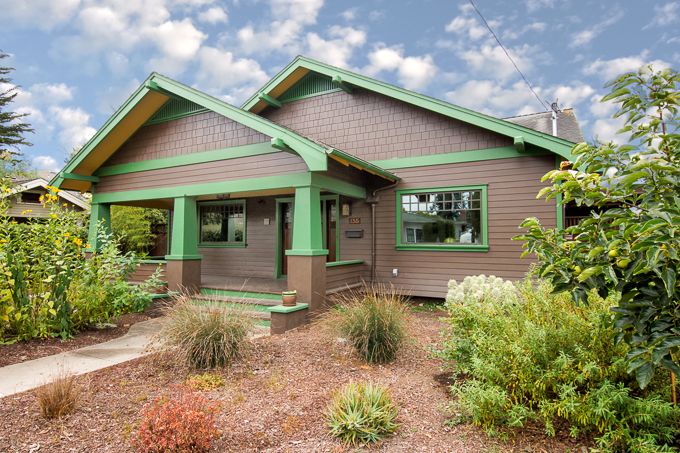
Home Tours, Blog and Book Information
Maine Lake Science Center: A Log Cabin Transformed!
(Updated 7-08-2016) Explore the transformation of an abandoned Maine log house to the high performance Lake Science Center. The Lakes Environmental Association (LEA) embraced the challenge of creating the LSC, complete with a conference center, laboratory facilities, office space, educational space, and residential functions for visiting researchers.
Among the many significant upgrades, the LEA provided insulation to the walls, roofs, and foundations and replaced old heating, domestic hot water, and ventilation equipment with up-to-date systems. An application to become a candidate for the Maine 1000 Home Challenge is in progress. Stay tuned to see if this project comes in better than the 50% Milestone of 18,500 kWh (total site energy) in this 3,500 square foot building.
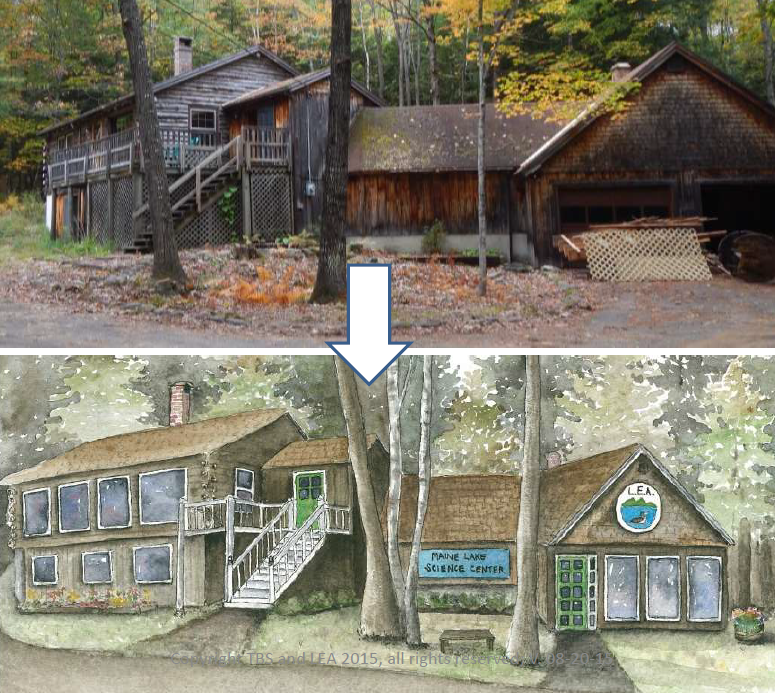
Case Studies & Presentations
Maine Antique Rehab & Staged Retrofit
(Updated 08-07-2015) This is the 1st home in Maine and the 27th project to meet the 1000 Home Challenge. Bill Turner tells the story of his home in Maine where superinsulation work began in 1981. He describes what he did wrong, and what he has done recently in an effort to bring the home from its 2011-12 baseline of ~62,309 kWh (equivalent site energy) to its 1000 Home Challenge OPTION B threshold.
Concern for indoor air quality and durability have been considerations since the beginning. Results show the impact of strategic densepack of a previously insulated home, combined with renewables, reduction of DHW and plug loads, and the use of ductless heat pumps to further offset wood use.
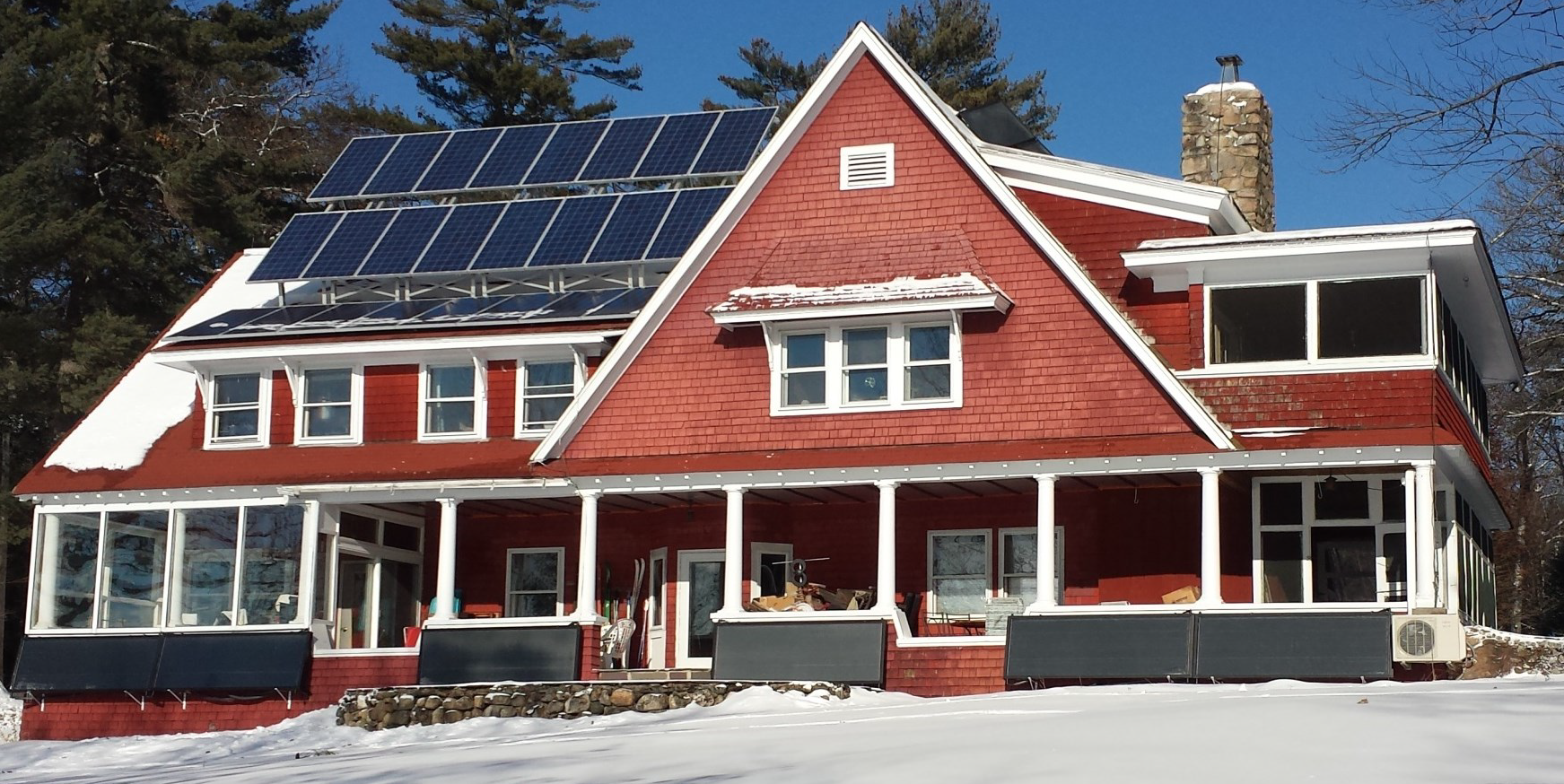
Case Study
Deep Energy Reduction Renovation of the Golden Acorn Ferret Cabilow
(Updated 07-09-2016) This DIY DER of a 1929 miner’s cabin in the Colorado mountains is our first project from Colorado. As an ongoing work-in-progress, it is a 1000 Home Challenge Candidate. Since 2011 it has achieved a 51% reduction in site energy usage through the use of attic and wall insulation upgrades, air sealing, window replacements, and solar PV, as well as occupant efficiency strategies. A very-low-budget renovation, it makes extensive use of salvaged materials to keep costs affordable.
Golden Ferret Acorn Cabilow: Midterm Assessment
Golden Ferret Acorn Cabilow: Quest for Carbon Neutrality
Golden Ferret Acorn Cabilow: Story
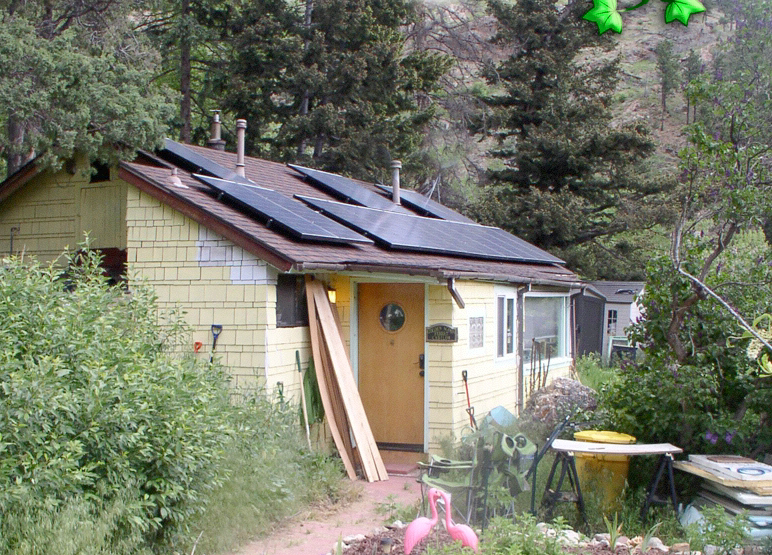
Case Study
Richard Renner Portland Maine Loft Case Study
(Updated 08-06-2015) – Explore the Portland, Maine renovation of an abandoned brick building to a professional office and studio loft by architect and owner, Richard Renner. While not meeting the 1000 Home Challenge at the time it was done, this project is an example of a substantial renovation that achieves exemplary energy performance and sustainability.
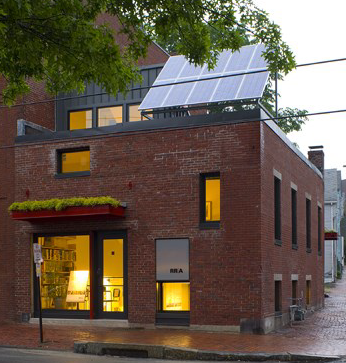
Case Study
The Energy+ Household – Bay Area, California
25TH PROJECT TO OFFICIALLY MEET THE 1000 HOME CHALLENGE!
(Updated 03-05-2015) – Over the last several years the Ghosh family has retrofitted their 2,170 ft2 house with a host of technological solutions. This project exemplifies the integration of efficiency, electrification, on-site electricity generation, and the use of electric vehicles as a way to substantially reduce a household’s carbon footprint.
The family of four has zero energy bills! That is, in day-to-day living, the Ghosh family pays zero electricity bills, zero natural gas bills, and zero gasoline bills. They use no propane or firewood. The family meets the energy needs of its all-electric home through a 11 kW PV array. The solar system generates a net surplus which has been used to operate two cars for commuting, chores, and occasional weekend trips.
This single-family home was built in 1997; in 2010 it consumed 600 therms of natural gas and 5,500 kWh of electricity (23,000 kWh site energy). Current household energy use, without the contribution of the PV generations is estimated to be <10,000 kWh. The average site energy use of a single-family California home is 20,000 kWh.
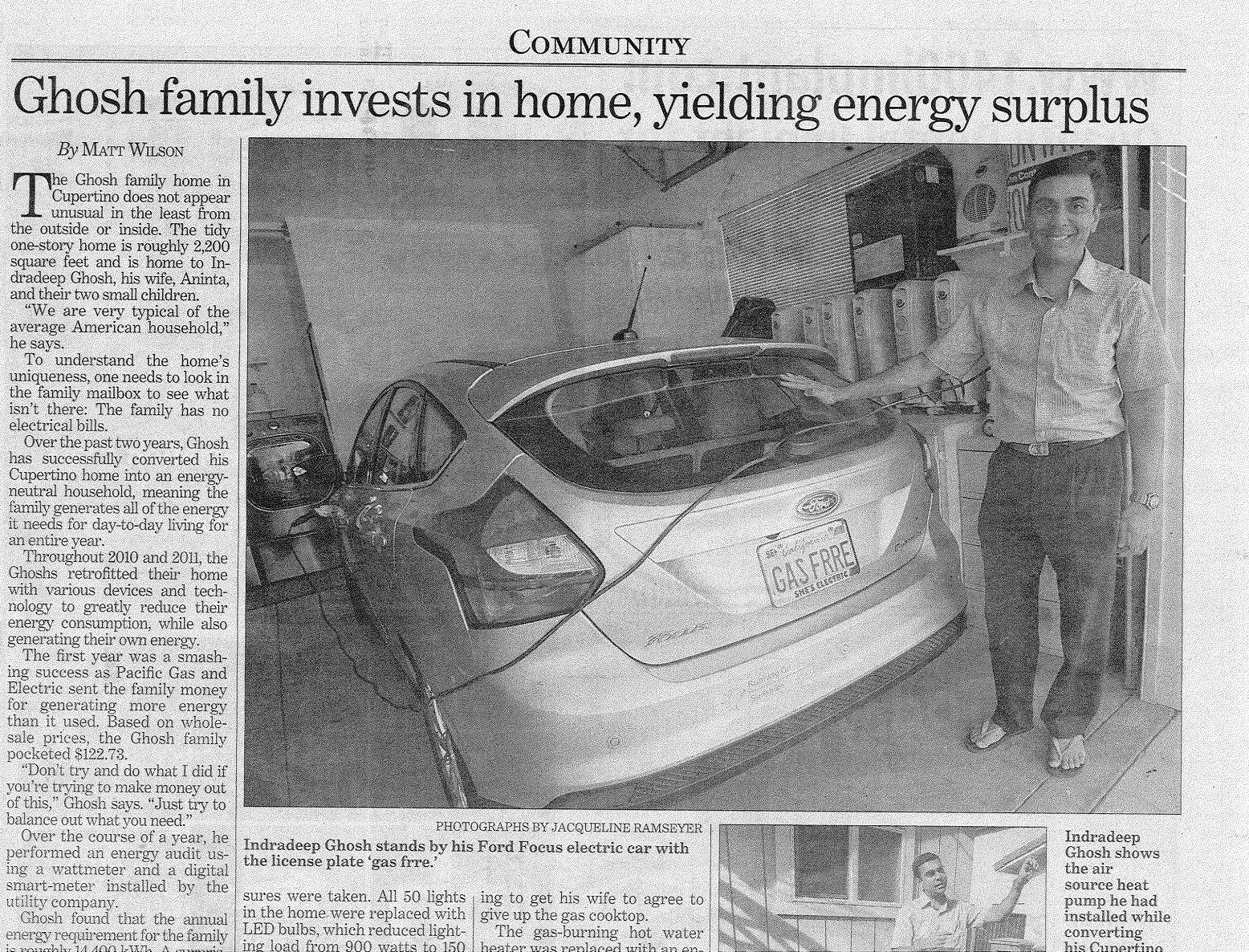
Case Study
Bergamaschi/Soo Hoo Residence, Oakland, California
(Updated 03-10-2015) – In 2011, this home became the 2nd in California, and the 5th in North America to officially meet the 1000 Home Challenge. The project documents that it is possible to substantially reduce energy use in an eleven-year-old California home, one that was built to the California Title 24 Energy Code. It provides an example of how the integration of lifestyle, renewables, and close attention to both electric and gas baseload can contribute to a home with very low energy use in California.
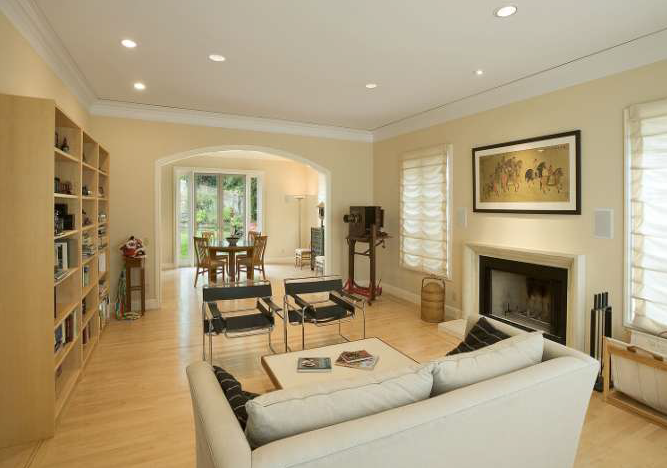
Webinar Presentation
Monahan Zero Energy Home
(Updated 01-07-2015) – Located in Albuquerque, NM this 1950 vintage ranch home is the 19th project to officially meet the 1000 Home Challenge and the first one from the southwest. When purchased in 2009 this 1,600 home featured no insulation, no heat, no water, and no southern exposure.
Find out why the owner claims his biggest mistake was the replacement of hazardous floor heaters with a 90% high efficiency central gas furnace. The project included insulation on all six sides, windows, doors, high efficiency appliances, two ductless heat pumps, and 3.8 kW PV system. Upgrade costs and pre and post energy performance are summarized in the case study.
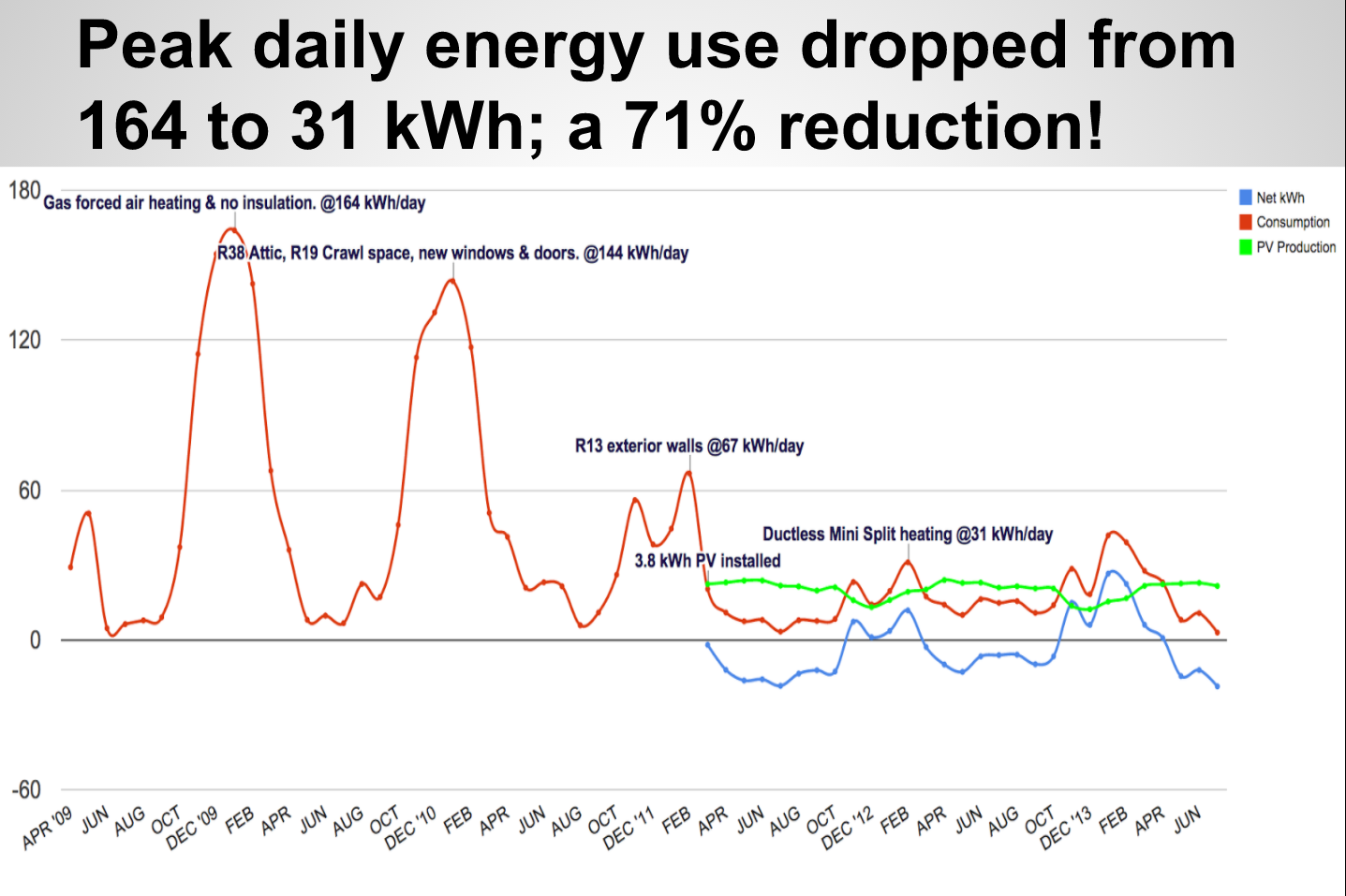
Webinar Presentation
Gloucester, MA - Livermore Energy Associates
(Updated 6-27-2014) – This is the 24th project to officially meet the 1000 Home Challenge. Completed in 2008 on a budget of $60,000, this deep energy retrofit of a 1970s raised ranch in Gloucester, Massachusetts achieved zero net energy in 2010. This project’s energy use has met its 1000 Home Challenge threshold allowance for the past four years.
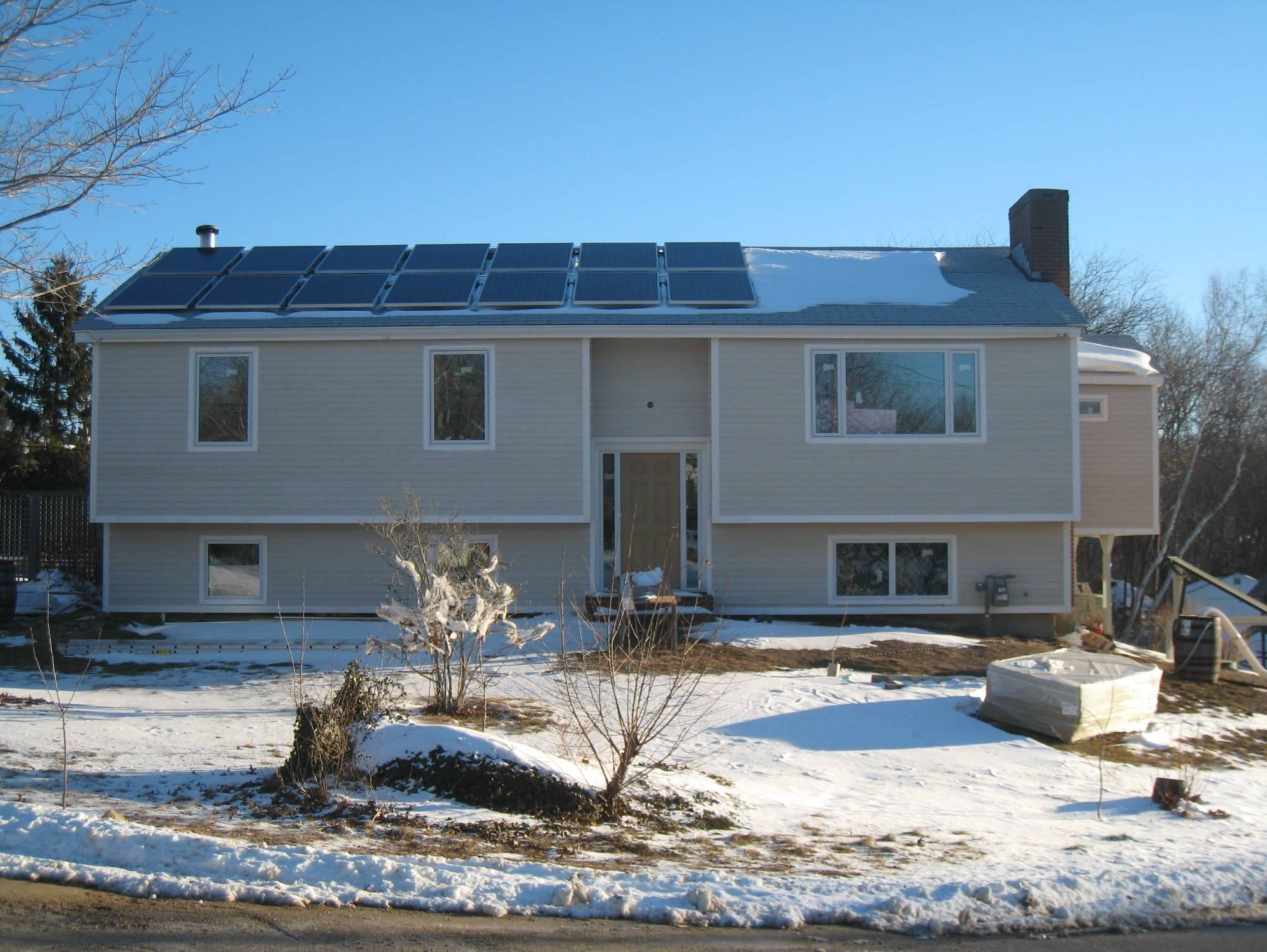
Case Study
Utah Bill Turner House
(Updated 03-13-2014) – Located in the mountains of Utah, this staged project has made impressive reductions to date but still needs to cut energy use by half to meet the 1000 Home Challenge. It is a 1000 Home Challenge Candidate. Features include a major basement remediation to create livable space, significant reduction in air leakage, integrating insulation of a cathedral ceiling as part of re-roofing as well as greatly improved comfort and elimination of an infestation of critters. While this log cabin reduction project has some elements unique to its 8,000 heating degree days location, there are practical lessons appropriate to house foundations and roofs in many parts of the country.
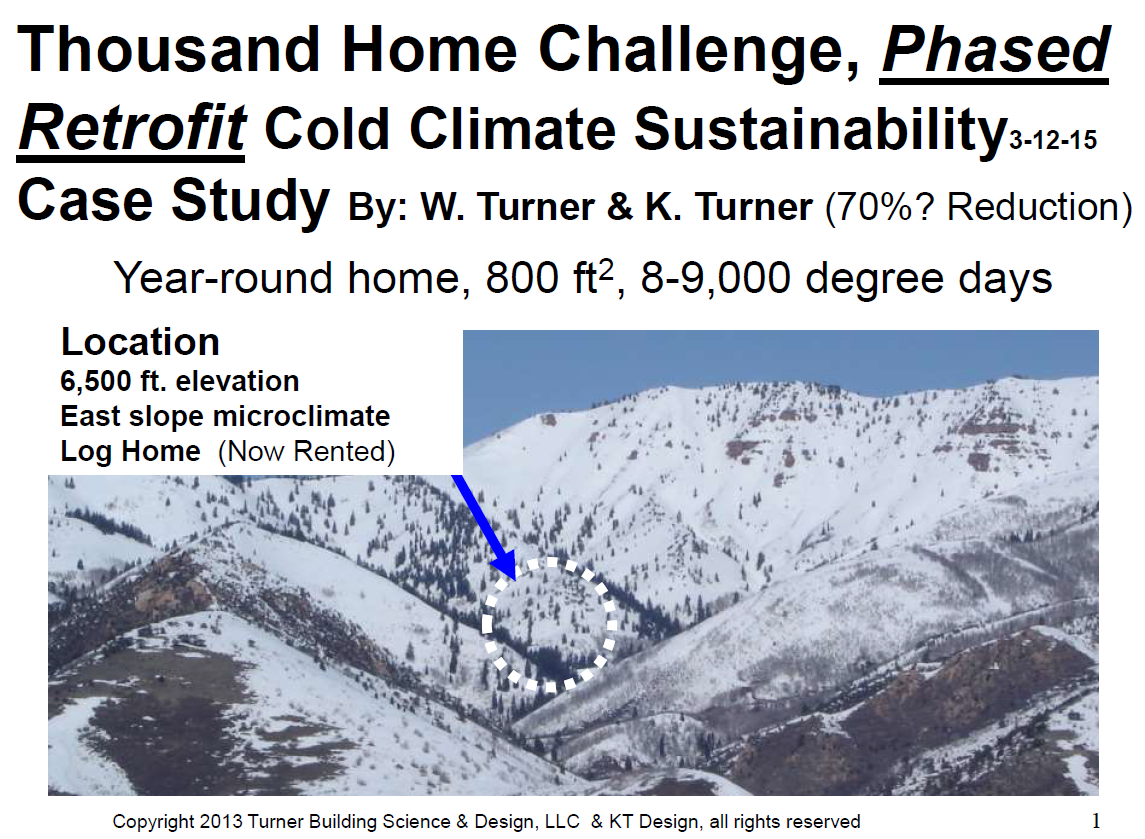
Case Study
The House on Hummingbird Hill, Salinas, California
(Updated 12-04-2013) – Larry and Suzanne Weingaten’s home in Salinas is the 13th to officially meet the 1000 Home Challenge. This 6-year old off-grid home features: a high performance building enclosure; very low electrical and water use (kW and kWh) through system design; careful placement of fixed and operational windows for optimum climate control and thermal comfort; and space and water heating systems designed to optimize solar inputs, and minimize parasitic energy use.
Meeting the 1000 Home Challenge required modest changes and an equally modest investment that included replacing the propane-fired refrigerator with a 24-volt DC refrigerator and a separate 24-volt freezer and reducing wood used for space heating. Their 1,800 square foot home used 3,207 kWh in site energy during the monitoring period, 40% less than their OPTION B allowance.
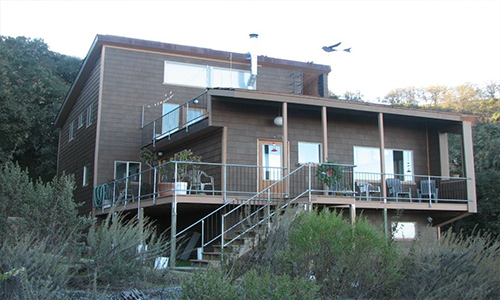
Case Study
Andrew Koh, Massachusetts
(Updated 05-12-2013) – Andrew Koh’s home is the 15th to officially meet the 1000 Home Challenge. His family’s 1960s Garrison Colonial home in Milton Massachusetts participated in National Grid’s Deep Energy Retrofit pilot program in 2010-11.The gas heated home uses an A. O. Smith Vertex water heater to supply the home’s space and water heating needs.
Thanks to A.O. Smith for the donation of this equipment. The project included a comprehensive enclosure retrofit, ventilation system, a 2.8 kW PV array, combined with an effort to reduce electrical baseload.
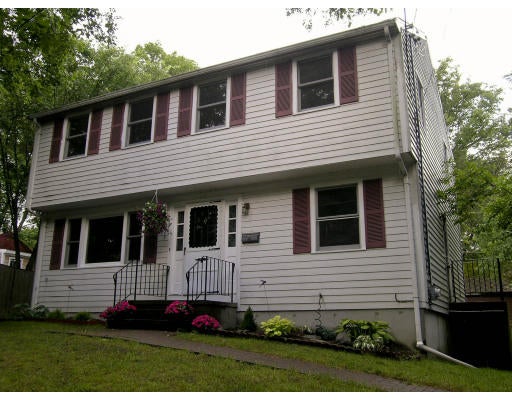
Case Study
Brownsberger Family, Massachusetts
(Updated 02-15-2012) – Two households (three generations of Brownsbergers) sold their single family homes and renovated this two-family dwelling in Belmont, Massachusetts as part of the National Grid Deep Energy Retrofit Pilot. This project is the sixth to officially meet the 1000 Home Challenge, and the first project in Massachusetts to meet the 1000 Home Challenge.
Resources:
BuilidingScience.com “Designs That Work” feature story.
The cover is an image of the Belmont DER.
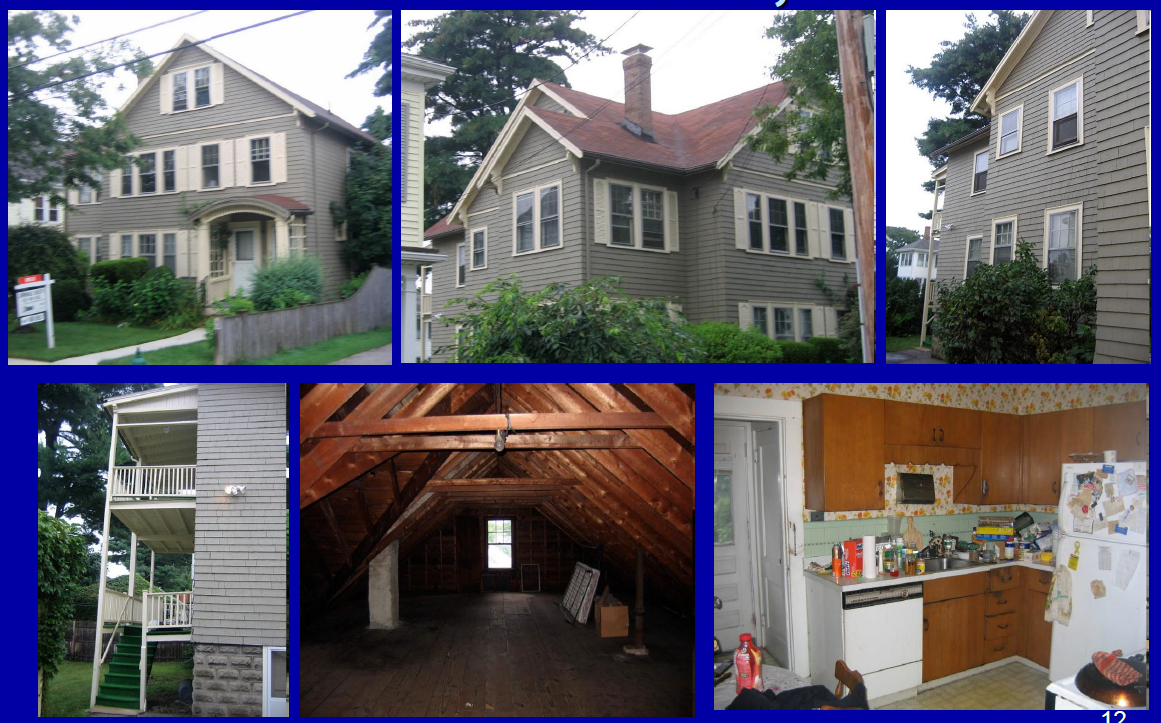
Case Studies
Ellen and George Beeler, California
(Updated 03-26-2011) – This 1940s home in Petaluma is the first home in California to meet the 1000 Home Challenge as part of the NorCal Collaborative. This project was completed in three stages, and incorporates a seismic retrofit.
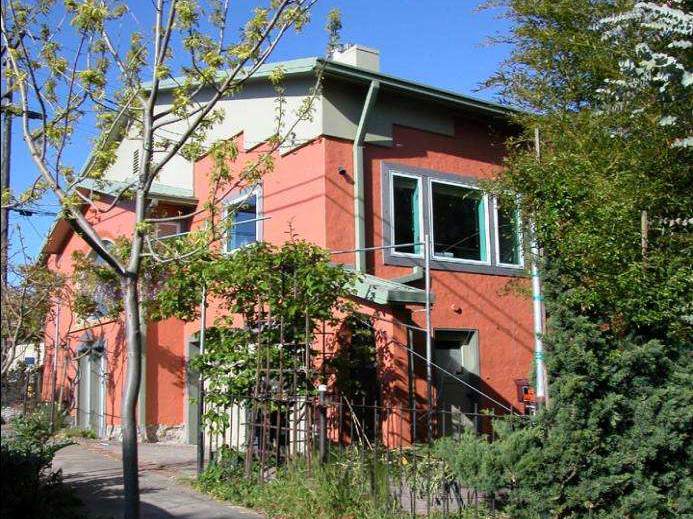
Case Studies
Ross Residence, Massachusetts
(Updated 01-16-2013) – The Ross residence in Amherst, Massachusetts achieved net zero in their 1884 home. This project has been exporting electricity since it was renovated in 2011. It is the 8th home to officially meet the 1000 Home Challenge.They received the NESEA net zero energy home award.
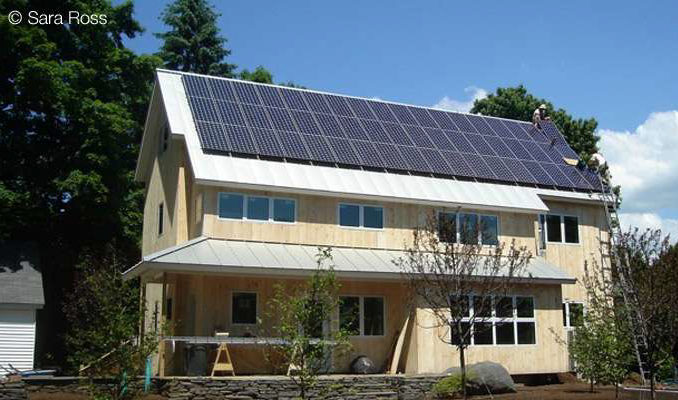
Case Study
Joanne Olson, Wisconsin
(Updated 03-26-2011) – A case study from Viroqua, Wisconsin demonstrates the process and results from the first of a three-stage retrofit on the path to net-zero energy.
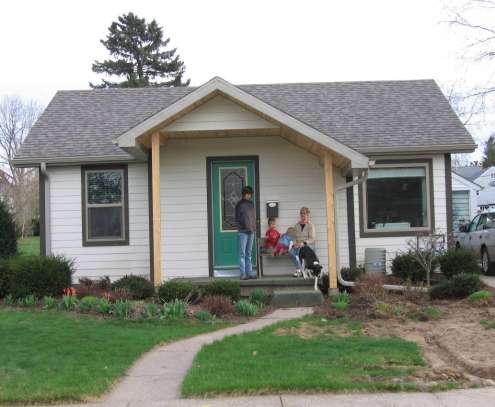
Case Study
Adolphustown Schoolhouse, Canada
(Updated 12-03-2013) – This PDF shows the Adolphustown Schoolhouse Deep Energy Retrofit in Greater Napanee, Ontario, Canada.
This is the first Canadian project to participate in and to meet the 1000 Home Challenge. This home heats with a masonry wood heater. No PV was needed to meet the 1000 Home Challenge.
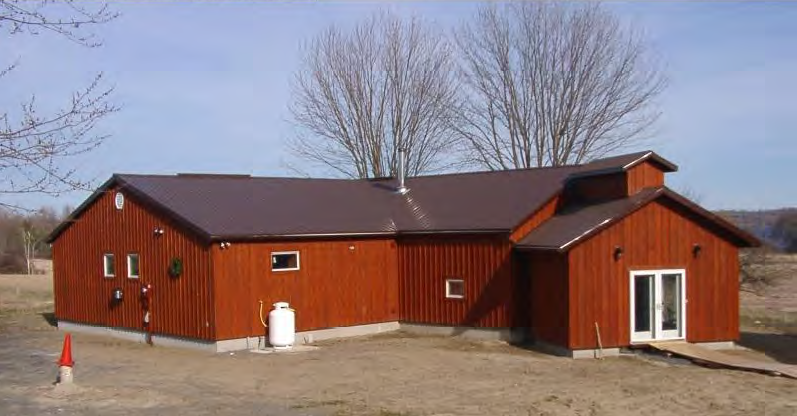
Case Study
Bindley Carbon Neutral Renovation, New Hampshire
(Updated 03-01-2010) – This PDF shows the conversion of a New Hampshire 1970’s ranch home to a net zero energy producer. This project’s energy use for the past three years meets the 1000 Home Challenge. It will officially meet the 1000 Home Challenge when the application is successfully completed.
